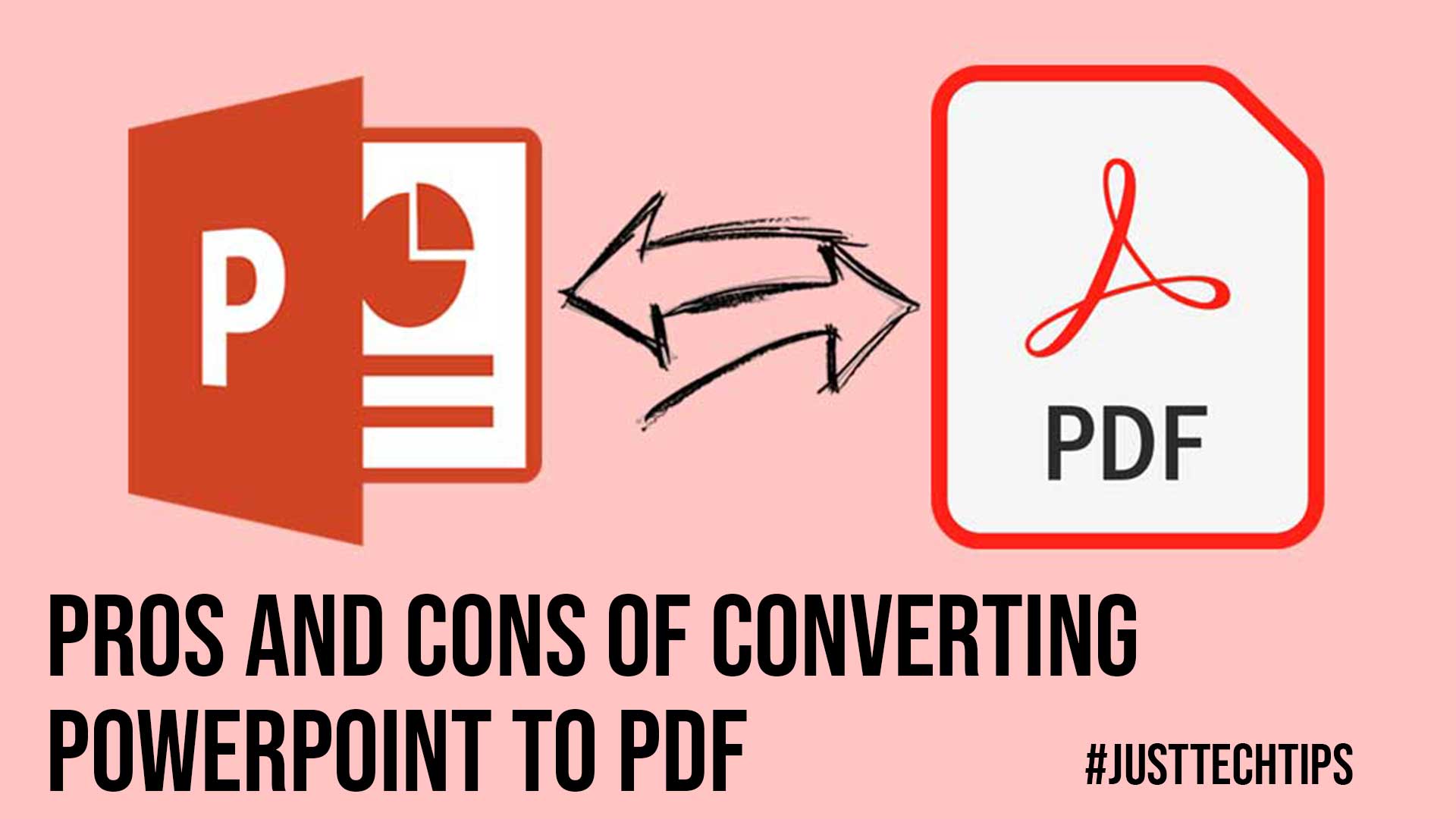In the era of technology and artificial intelligence, the data comes from different sources having different formats. Machines used data in their formats, web content is generated in any other format, human used data on their choice. Formats of data vary from industry to industry.
Some of the machines used data in human-readable form, which is quite strange. Most often we want to convert the format of data for our use. The advantages and disadvantages are quite obvious in converting data in different formats.
Today we will discuss the advantages and disadvantages of conversion between Microsoft PPT to PDF.

Before moving forward, we need the basic understandings of MS PowerPoint and Adobe portable document format.
Portable Document Format (PDF) by Adobe, Inc
PDF is the format of saving data in digital form, developed by Adobe, Inc. This file format is compatible with almost every operating system e.g. Microsoft Windows, Linux flavors, and macOS.
The exchange of data is quite easy in pdf format. Teachers, researchers, people from the tech industry used this file format for sharing data. It is a very reliable form of digital data format.
Microsoft Powerpoint (MS PPT)
The Microsoft application used to create or design presentations. This application is widely used by professionals belonging to different fields.
Presentation is like storytelling, and MS ppt is the best way to tell the story of your business achievement, or research you have done. You can animate and add transitions in your slides for making the presentation more attractive and readable.
Also Read: 4 Reasons Why You Should Convert HTML To PDF Online
Advantages of converting ppt to pdf
Size of file
When we convert the MS PowerPoint file in a portable document format (PDF), the size will automatically be decreased because all the extra features of ppt will also be removed during conversion in pdf. Now you can easily share your presentation with anyone else without having memory constraints.
Google and Hotmail have 25MB and 10MB transfer limits respectively. If your presentation covers a wide range of stuff then most probably the size of the ppt file is more than 30MB.
Security constraints
The PowerPoint is an editable file, anyone can edit, add, and remove the content from your presentation. Data breaching can lead to serious problems if you are working for any security institutions. The confidentiality of data is very important in the current era of technology. The conversion of ppt to pdf can help to secure your data because the pdf file is not editable. You can also make your pdf document password protected.
Data Integrity
Data integrity is a very important factor when you are about to start the presentation in front of a huge audience. In ppt, every slide is single and amendable. If one of your slides is accidentally deleted or the order of slides is accidentally altered, the whole presentation will be worse than your thoughts.
The pdf is the best option in this situation. The whole document with ordered slides and non-editable files can reduce the risk of data integrity and a mishap in the event.
Also Read: 4 Useful Tricks For Converting Excel To PDF
Disadvantages of converting ppt to pdf
Loss of off slide content
As we already discussed that ppt and pdf are two different types of formats, so it’s quite obvious that they both have different features. We might lose some data while converting our ppt file.
Ppt has options of adding off slide content which is not supported by pdf and you will lose all the off-slide content e.g. notes, sliding pictures, attached files, etc.
Transitions and animations
Transitions between data and animations between slides are very attractive features of MS PowerPoint, however, these features are not supported by Portable document format and all the animations and transitions will be removed after converting the ppt presentation in pdf document.